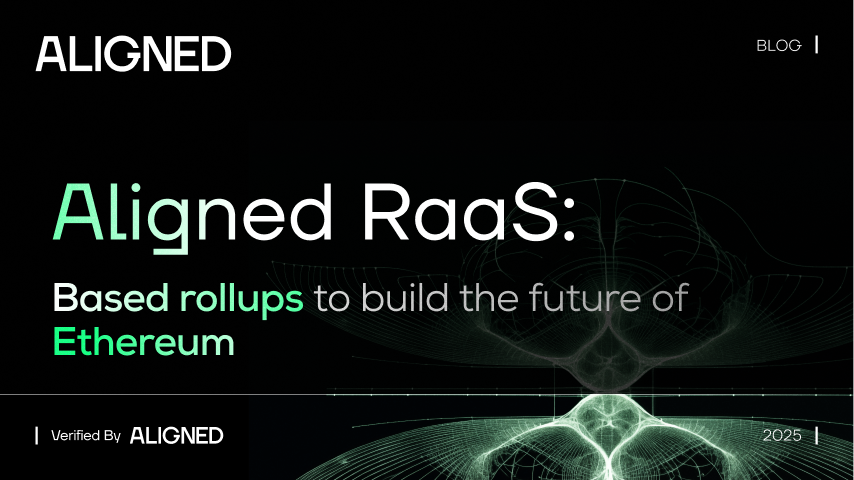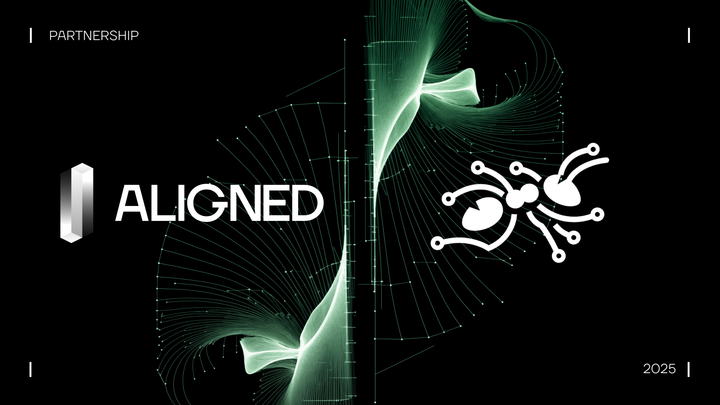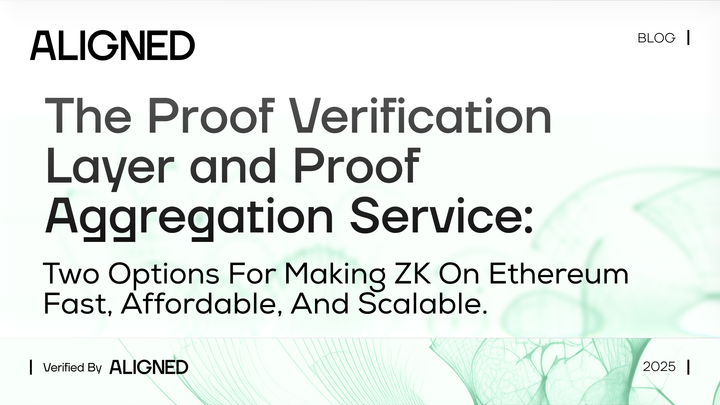Aligned RaaS: Based rollups to build the future of Ethereum

Aligned is in the business of selling access to Ethereum. Our product stack began with the Proof Verification Layer (live on mainnet since November) which was followed by the Proof Aggregation Service (currently on testnet). Together, this two-part ZK Verification Layer allows ZK proofs to be verified on Ethereum without the usual high gas costs, meaning applications can use ZK in production today.
ZK-rollups are one example of products that suffer from high verification costs which we believe can greatly benefit from our ZK Verification Layer. Unsatisfied with the current rollup-as-a-service (RaaS) options in the market, we have since announced our next product: a RaaS platform that integrates RISC-V zkVMs, the new Ethrex execution client, and our ZK Verification Layer to offer fast, reliable, and secure based ZK-rollup deployment, making it as simple as launching a Web2 service. By vertically integrating the different products in our roadmap, we aim to offer the most performant and cost-effective one-click stack for building on Ethereum.
Institutions and enterprises want to access Ethereum’s trust, liquidity, and composability, but existing rollup stacks fail to provide all of these features while also being difficult to launch and expensive to operate. Ethereum’s near-term roadmap is however set to address these challenges by enabling based rollups, an innovative new way of scaling blockchains that solves many of the problems plaguing the rollup-centric roadmap today. Because Ethrex is built to support based rollups from the get-go, it was the natural choice of stack for us to deliver a RaaS platform that can meet the growing institutional demand for building on Ethereum.
This article is meant as an introduction to based rollups to explain the benefits of this construction and why we are focused on supporting based rollups with Aligned’s RaaS platform.
What are based rollups?
Based rollups are rollups that use Ethereum L1 proposers and builders for sequencing (ordering its transactions and forming blocks), as opposed to a separate (typically centralized) sequencer.
Based sequencing is “based on the L1”, meaning that rollups using this design give Ethereum’s validators the power to sequence rollup transactions. This simplifies what a rollup needs to do and lets it take advantage of the extensive, battle-tested infrastructure that makes up Ethereum’s block building market. The result is a rollup architecture that offers greater feature parity with the L1 and many other benefits that are important to customers looking to launch their own rollup.
The benefits of based rollups
Based rollups provide a range of benefits that address many of the shortcomings rollups currently face. Because non-based rollups are not synchronously composable with Ethereum their proliferation has resulted in liquidity fragmentation and the majority of DeFi volume taking place on the L1, which has higher fees. Based rollups enable atomic synchronous composability and full access to Ethereum’s liquidity, ultimately resulting in improved interoperability between apps and smart contracts and greatly improved UX.
By eliminating the need for a dedicated sequencer, based rollups are inherently more decentralized, have stronger liveness guarantees, are more censorship-resistant, and more credibly neutral than non-based rollups. These are core features of Ethereum that make it the best decentralized smart contract platform for high-value, global transactions—features which non-based rollups fail to replicate.
Based rollups benefit from reduced operating costs as they don’t require operators to run a dedicated sequencer, but also make use of the L1s existing block building pipeline. This means based rollups do not need to attract sophisticated actors to provide these services, further reducing costs and improving efficiency.
The road ahead
Synchronous, L1-composable based rollups are more powerful, easier to build with, and produce better network effects for Ethereum and its L2s. Based rollups are an active area of research within the Ethereum ecosystem, and different approaches to implementing based sequencing are currently being proposed.
The Ethrex client by LambdaClass is currently the second-fastest L1 execution client and is targeting 1M gas/s performance in the future. Ethrex is being built to support based rollups in its L2 mode, with its preferred design of “permissionless with preconfirmations using L1 proposers as L2 sequencers” requiring upgrades to the L1, such as deterministic lookahead (EIP-7917) expected in the Fusaka hardfork. We are closely collaborating with them to ensure we can support based rollups with our RaaS platform as soon as possible.
Sovra is the first partner we’re serving with our RaaS stack, with many more to be announced soon. These partners come from a range of different web2 and crypto-native verticals, each with their own requirements, but sharing a common need for accessing Ethereum’s benefits. You can learn more about Sovra and how we’re supporting their Digital Trust Stack on a recent podcast we recorded with them on The Rollup.
We’re focused on delivering this for our customers because we believe based rollups are the best way to export Ethereum’s most important features, all with greater throughput and lower costs.
Reach out to us if a rollup is on your roadmap.
Stay tuned: 🐦 Twitter | 🗨️ Telegram | 👾 Discord | 🌐 Website | 📝 Manifesto



